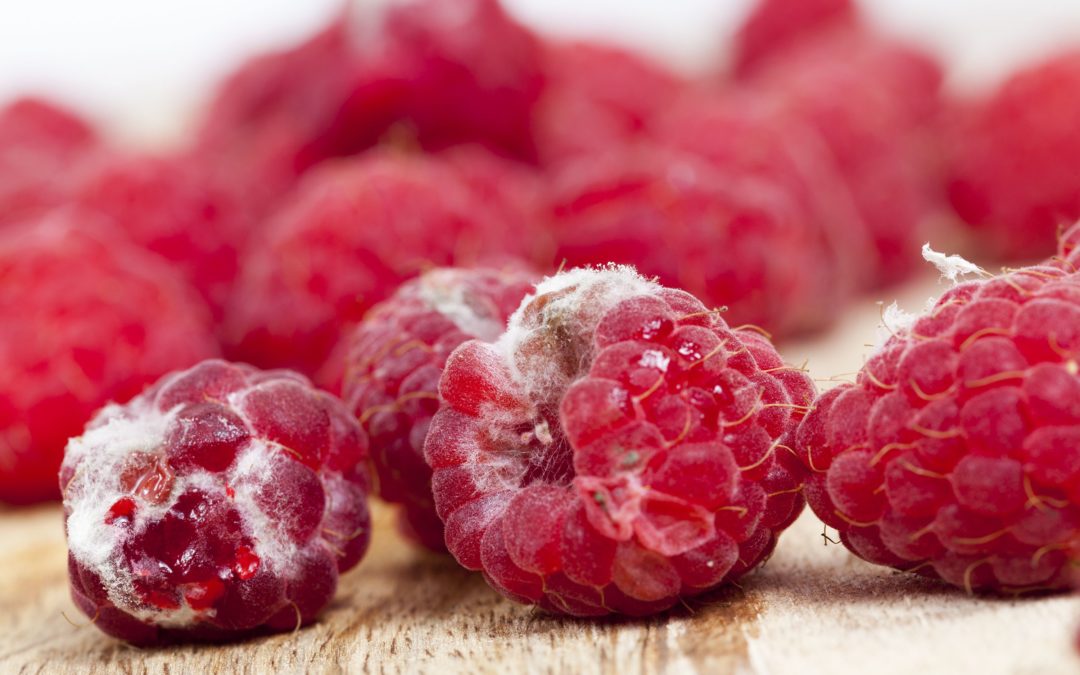No, I’m not talking about something a character from a 1970s TV show might have said. I’m talking about that feeling when you open your refrigerator in the morning to grab berries for breakfast and are greeted by raspberries that are growing beards and turning to mush. Premature food spoilage.
How frustrating. No fruit for breakfast, and a $5 clamshell of raspberries is now going in the trash. More food waste.
Premature Food Spoilage – Why Does it Happen?
I’ll bet you’ve had this experience at least once. But have you wondered why it happens? The simple answer is that, because product wasn’t handled properly, it ran out of freshness (also known as shelf-life), resulting in the mushiness and fungus you saw when you opened the fridge that morning.
The obvious follow up question is ‘why?’ Why did the fruit run out of shelf-life? According to the expiration date label, the fruit wasn’t due to expire for another three days, yet here it is turning to mush. Ultimately, the culprit is bad temperature management. All produce has a shelf-life. The maximum shelf-life is based on the specific product, the harvest conditions and post-harvest temperature management. For example, raspberries are particularly “high-risk” products. Of the smallest fruits, they have the shortest shelf-life to begin with. They last five to seven days at most once they’re picked if handled and stored in optimal conditions.
It’s a Living Thing
Like all living things, produce respirates or breathes. The faster it respirates, the faster it ages. The best way to slow the respiration rate – and maximize the shelf-life – is to cool the product down (typically to about 34 degrees for berries) as quickly as possible after harvest and maintain that desired temperature from the packing house to the store.
This is easier said than done because there are a lot of variables in the fresh food supply chain that can impact a fruit’s remaining freshness. Harvest temperature and time spent in the field can vary significantly, based on time of day and location. Time waiting for precooling or precooling efficiency can also differ by quite a bit. And there can be temperature variations in the trailer on the way from the pack house to the distribution center. These temperature variations impact the respiration rate and therefore the remaining freshness. The result is that each pallet of produce will likely have a different shelf-life. And when your grocer unknowingly sells you a clamshell of raspberries that turn to mush or grow fuzz a day later, it’s because they didn’t know the condition and remaining shelf-life of that product. It wasn’t an intentional mistake. They just didn’t have all the information.
For decades the industry has relied on old style data loggers and temperature trackers to ensure cold chain compliance during transit. The trouble is, these devices are designed to alert for temperature excursions while the product is in the trailer. You can read the logger when the trailer arrives and know that, at some point, the product hit 55 degrees, for example. But, by the time you know that, it’s far too late to do anything about it. Besides, you don’t know how much the temperature excursion impacted remaining freshness, and you also don’t know what happened before the product was loaded onto the trailer. Incomplete and reactive data leads to spoiled products, unhappy customers and waste.
Solving Premature Food Spoilage
What’s required to solve the premature food spoilage problem is proactive supply chain management. The first step is to know the maximum shelf-life for a product in ideal conditions. Then it’s essential to monitor and manage the temperature of the product – at the pallet level – from the time it’s harvested to the time it’s delivered. Once you have this data, you can use machine learning and predictive analytics to dynamically calculate the actual remaining shelf-life of the product in real time. This enables intelligent pallet routing (routing pallets with less shelf-life to nearer locations and those with more to farther locations) and also alerts the grocer if a pallet of raspberries only has three days of shelf-life left instead of six. This eliminates (or at least reduces) the chances of them selling you berries that are going to prematurely turn to mush or grow beards in your fridge.
This is what Zest Fresh does. It provides growers, packers, shippers and retailers with the information needed to proactively manage the fresh food supply chain. The result is reduced waste for retailers by 50 percent or more. Learn how we do it here.
PS: Here’s a couple of tips that can also help you get fresher berries and minimize premature food spoilage. It always amazes me that, during the hot summer months, grocers display berries and other fresh fruit on non-refrigerated tables at the front of the store right by the doors. The idea is to entice you to buy these appealing products the moment you walk in. The problem is, that’s generally the warmest part of the store. Those products are breathing faster than those in a refrigerated bin. My recommendation is to find products in the produce section that are kept refrigerated. They will likely last a day or two longer. The second tip is don’t wash berries ahead of time as that can lead to mold growth. Instead wash them thoroughly just before eating them.


